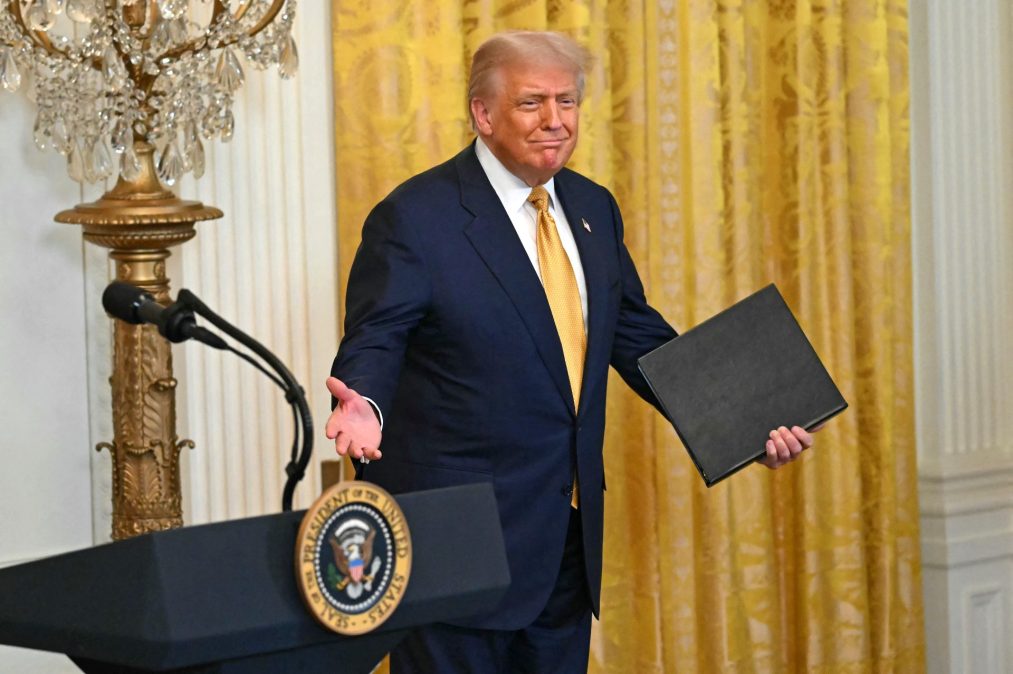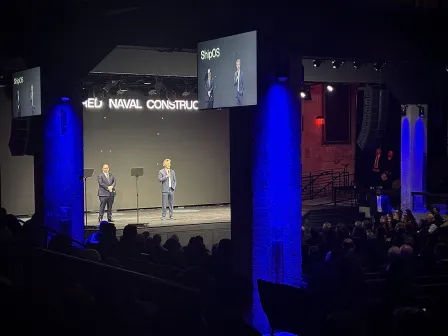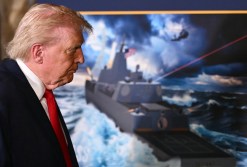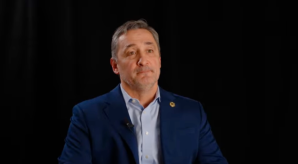Trump eyes new Pentagon-led ‘proving ground’ in much-anticipated AI action plan

President Donald Trump’s new artificial intelligence-enabling policy framework calls for multiple actions to advance the military’s adoption of the technology, including the standup of an “AI and Autonomous Systems Virtual Proving Ground” at the Department of Defense.
“The United States must aggressively adopt AI within its Armed Forces if it is to maintain its global military preeminence while also ensuring, as outlined throughout this Action Plan, that its use of AI is secure and reliable,” the 28-page AI Action Plan document states.
Released on Wednesday — ahead of several corresponding executive orders in the publication pipeline — America’s AI Action Plan broadly promotes more widespread use of AI and machine learning, and seeks to reduce administrative and other hindrances limiting government deployments.
“The Action Plan’s objective is to articulate policy recommendations that this administration can deliver for the American people to achieve the president’s vision of global AI dominance,” officials wrote.
The strategy prioritizes three pillars: driving innovation, building out infrastructure, and leading in international AI diplomacy and security.
It builds on the American AI Initiative launched under the first Trump administration, and was prompted after the president rescinded a Biden administration AI mandate in January at the start of his second term.
Because of DOD’s “unique operational needs,” the new action plan carves out policy recommendations custom for the department — such as the new AI and autonomy proving ground. The process for that new test range will begin “with scoping the technical, geographic, security, and resourcing requirements necessary for such a facility,” officials wrote.
The plan also directs the Pentagon to develop a streamlined process for classifying, evaluating, and optimizing workflows involved in its major functions and, eventually, a list of its priority workflows for automation with AI.
Personnel are additionally told to “prioritize DOD-led agreements with cloud service providers, operators of computing infrastructure, and other relevant private sector entities to codify priority access to computing resources in the event of a national emergency so that DOD is prepared to fully leverage these technologies during a significant conflict.”
Further, Trump’s framework calls for new talent development programs to meet the Pentagon’s AI-related workforce requirements — and to grow its Senior Military Colleges “into hubs of AI research, development, and talent building, teaching core AI skills and literacy to future generations.”
On a call with reporters Wednesday morning, a senior White House official said that more than 10,000 responses were submitted to the administration’s request for information to inform the action plan’s development.
“It was probably one of the most diverse sets of individuals from across the country and across different sectors — from civil society, to Hollywood, to academia, to the private sector. It really represented and showed the intense interest that the American people had in this and the responses from that RFI ultimately were reflected in the report,” the senior official said.
The guidance does not explicitly name the Pentagon’s Chief Digital and AI Office in regards to carrying out any of these new responsibilities.
Editor’s note: FedScoop’s Madison Alder contributed reporting.






